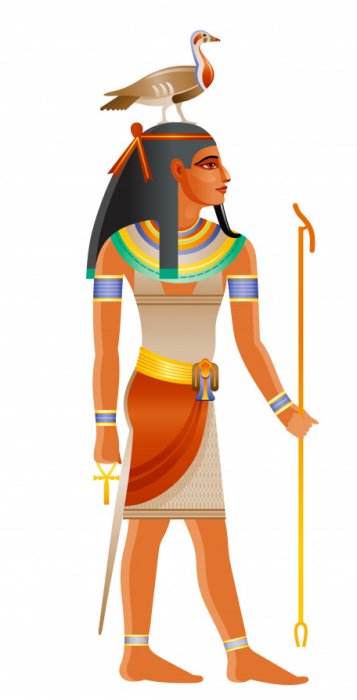Gengen Wer – Goose God Who Guarded The Celestial Egg Containing The Life Force In Egyptian Beliefs
A. Sutherland - AncientPages.com - The primeval goose shares a close relation with certain deities from ancient Egyptian mythology. Among these is Gengen-Wer, an archaic Egyptian god represented by a goose.
This deity was seen as an embodiment of creative energy and was linked to the myths surrounding the creation of the world in ancient times.
 Facsimile Painting of Geese, Tomb of Nefermaat and Itet ca. 2575–2551 BC at Meidum. The above facsimile was once part of a larger scene discovered on the north wall in the tomb chapel of Itet, the wife of the vizier Nefermaat, and likely the daughter-in-law of King Snefru. The original of this artwork is now in the Egyptian Museum, Cairo. Image source.
Facsimile Painting of Geese, Tomb of Nefermaat and Itet ca. 2575–2551 BC at Meidum. The above facsimile was once part of a larger scene discovered on the north wall in the tomb chapel of Itet, the wife of the vizier Nefermaat, and likely the daughter-in-law of King Snefru. The original of this artwork is now in the Egyptian Museum, Cairo. Image source.
In the mythology of ancient Egypt, the goose held a revered status. It was perceived as an emblem representing the soul of those who had passed away. This symbolism is often evident in the tomb paintings and reliefs from this historical period in Egypt.
This bird was linked with the goddess Isis, the goddess of motherhood, fertility and magic, but also with god Gengen-Wer, once revered figure in Egyptian mythology but has since faded into obscurity.
Gengen-Werwas renowned for symbolizing the potent force of creation, an attribute depicted through the emblematic carrying of an egg - a universal symbol for the genesis of life.
The god's name originates from "honker" (gengen) and "great" (wer), so he is Gengen-Wer, also called "Cackler."
The goose was also closely associated with the earth god Geb, often called the "great cackler." The goose was Geb's sacred animal and symbol, and in this form, Geb was the one who laid the first egg from which the sum emerged as the Benu bird, an ancient Egyptian deity linked with the sun, creation, and rebirth.
According to Egyptian mythology, the Bennu was a self-created being that played a significant role in creating the world. It was said to be the ba of Ra, which enabled Atum's creative actions. Besides, the hieroglyph for the name "Geb" was a goose, so this god was often symbolically assigned the head of a goose when depicted.
In this appearance, he symbolizes the source of the worldwide concept about the goose that laid the egg from which the world was hatched.
The goose also symbolized other deities, including the god Harpokrates Harpa-Khruti (Horus the Child), known by the Greeks as the god of silence, and Hapi (Hapy), the early Egyptian god of the Nile River, fertility, life, and abundance.
Egyptian Goose God Gengen Wer. Credit: Adobe Stock - Olga Che
The deities of ancient Egypt were frequently linked with narratives of creation and beliefs about the afterlife. These elements held substantial significance in the lives of the ancient Egyptians.
Therefore, Gengen-Wer is mentioned in descriptions of the underworld, death, and the afterlife in which the deceased is said to be the god's egg or guard it.
In the "Pyramid Texts," the deceased flies to heaven as a goose.
Various species of geese are displayed in Egyptian art, and the god Gengen-Wer can be one of their representations. Traditionally, the goose also represented Amun, the god of the air and one of the eight primordial Egyptian deities. Amun's name first appeared in the Pyramid Texts of Dynasty V and the Old Kingdom creation myth known as the Ogdoad of Hermopolis as one of the eight deities closely associated with the concept of the world's creation. In the Ogdoad's creation activities, a (blue) lotus flower immediately transforms into Nefertum.
Amun ('the hidden one') can appear as a creator god and is connected with the goose, which is sacred to him. However, his identity in the Egyptian religion has changed much over the centuries.
In one version of the creation myth, an egg was laid on the original mound of creation by the celestial goose ('the great cackler'), out of which emerged the sun god Ra, the first of the gods.
This creative aspect remained a part of Amun's nature.
However, during the Amarna Period and Akhenaten's reign, the Amun's image had no right to exist, and the worship of Amun was replaced with that of Aton.
In Egyptian religion, a goose was frequently an offering –food to the gods and the deceased. According to tradition, the goose was a ritually offered symbol of the gods' enemies. Several animals like cats, baboons, ibises, crocodiles, dogs, and serpents (to name a few) were sacred to many gods in the Egyptian pantheon, but the goose was not.
However, goose worship was prevalent in specific locations, like Karnak, where a flock of sacred geese was kept on the temple lake in Amun's Great Temple.
Written by – A. Sutherland - AncientPages.com Senior Staff Writer
Updated on February 8, 2024
Copyright © AncientPages.com All rights reserved. This material may not be published, broadcast, rewritten or redistributed in whole or part without the express written permission of AncientPages.com
Expand for referencesReferences:
Richard H. Wilkinson: The world of the gods in ancient Egypt
Wilkinson, R. The complete temples of Ancient Egypt
More From Ancient Pages
-
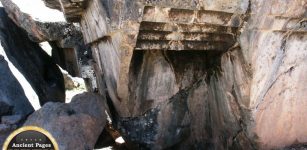 Enigma Of Ancient Upside Down Stairs At Sacsayhuamán
Featured Stories | May 27, 2014
Enigma Of Ancient Upside Down Stairs At Sacsayhuamán
Featured Stories | May 27, 2014 -
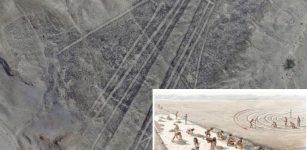 Dozens Of Giant ‘Lost’ Nazca Geoglyphs Unearthed By Drones In Peru
Archaeology | Apr 7, 2018
Dozens Of Giant ‘Lost’ Nazca Geoglyphs Unearthed By Drones In Peru
Archaeology | Apr 7, 2018 -
 Silphium – Remarkable Ancient Herb That Mysteriously Vanished
Ancient Traditions And Customs | Jul 10, 2021
Silphium – Remarkable Ancient Herb That Mysteriously Vanished
Ancient Traditions And Customs | Jul 10, 2021 -
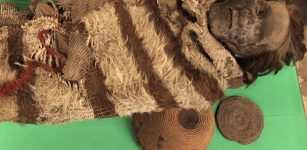 DNA Taken From Cement On Hairs Belonging To Ancient Mummies Shed Light On South American Ancestry
Archaeology | Dec 29, 2021
DNA Taken From Cement On Hairs Belonging To Ancient Mummies Shed Light On South American Ancestry
Archaeology | Dec 29, 2021 -
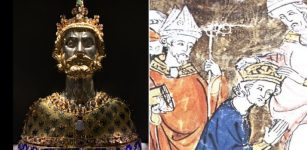 Mystery Of The Controversial Phantom Time Hypothesis
Featured Stories | Mar 21, 2019
Mystery Of The Controversial Phantom Time Hypothesis
Featured Stories | Mar 21, 2019 -
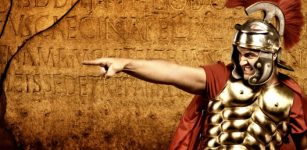 Meaning Of Ancient Hand Signs We Still Use Today
Ancient History Facts | Apr 22, 2021
Meaning Of Ancient Hand Signs We Still Use Today
Ancient History Facts | Apr 22, 2021 -
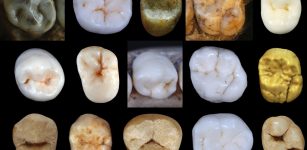 Neanderthals And Modern Humans Diverged At Least 800,000 Years Ago
Archaeology | May 17, 2019
Neanderthals And Modern Humans Diverged At Least 800,000 Years Ago
Archaeology | May 17, 2019 -
 Algonquin People And The Myth Of The Medicine Woman In The Moon
Featured Stories | Feb 1, 2016
Algonquin People And The Myth Of The Medicine Woman In The Moon
Featured Stories | Feb 1, 2016 -
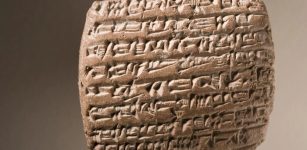 Locations Of 11 Lost Ancient Cities Revealed On 4,000-Year-Old Artifacts
Archaeology | Nov 15, 2017
Locations Of 11 Lost Ancient Cities Revealed On 4,000-Year-Old Artifacts
Archaeology | Nov 15, 2017 -
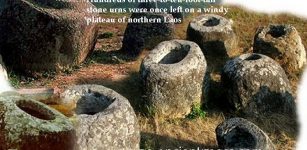 Mysterious Jars In Laos – Long-Lasting Mystery Is Still Unsolved
Archaeology | May 20, 2019
Mysterious Jars In Laos – Long-Lasting Mystery Is Still Unsolved
Archaeology | May 20, 2019 -
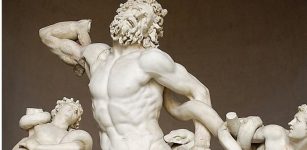 Laocoon – A Trojan Priest Who Offended The Gods And Was Strangled By Sea Serpents
Featured Stories | Nov 15, 2021
Laocoon – A Trojan Priest Who Offended The Gods And Was Strangled By Sea Serpents
Featured Stories | Nov 15, 2021 -
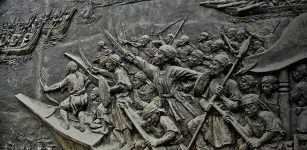 Lachit Bhorphukan: Hero From Assam Among Famous Warriors Who Stopped Mughals From Conquering Northeast India
Featured Stories | Dec 28, 2016
Lachit Bhorphukan: Hero From Assam Among Famous Warriors Who Stopped Mughals From Conquering Northeast India
Featured Stories | Dec 28, 2016 -
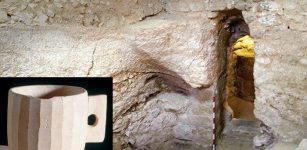 Childhood Home Of Jesus May Have Been Found Underneath The Sisters Of Nazareth Convent
Archaeology | Nov 24, 2020
Childhood Home Of Jesus May Have Been Found Underneath The Sisters Of Nazareth Convent
Archaeology | Nov 24, 2020 -
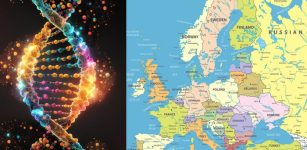 5,000-Year-Old DNA Could Solve The Mystery Of Genetic Changes In Europe
Archaeology | Mar 8, 2022
5,000-Year-Old DNA Could Solve The Mystery Of Genetic Changes In Europe
Archaeology | Mar 8, 2022 -
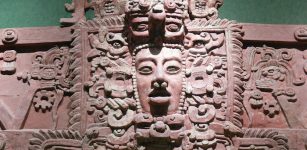 Fixing Archaeology’s Dating Problem – New Method Developed By Scientists
Archaeology | Sep 17, 2021
Fixing Archaeology’s Dating Problem – New Method Developed By Scientists
Archaeology | Sep 17, 2021 -
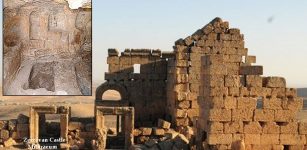 New Discoveries In Excavated Ancient Temple Linked To Secret Mithras Religion
Archaeology | May 15, 2018
New Discoveries In Excavated Ancient Temple Linked To Secret Mithras Religion
Archaeology | May 15, 2018 -
 On This Day In History: Battle of Devil’s Hole Was Fought – On Sep 14, 1763
News | Sep 14, 2016
On This Day In History: Battle of Devil’s Hole Was Fought – On Sep 14, 1763
News | Sep 14, 2016 -
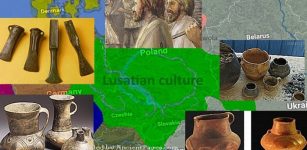 3,000-Year-Old Settlement Of Lusatian Culture Unearthed On Outskirts Of Warsaw, Poland
Archaeology | Sep 14, 2020
3,000-Year-Old Settlement Of Lusatian Culture Unearthed On Outskirts Of Warsaw, Poland
Archaeology | Sep 14, 2020 -
 Is Mysterious Pokaini Forest An Ancient Healing Center And Anomalous Zone?
Featured Stories | Aug 13, 2018
Is Mysterious Pokaini Forest An Ancient Healing Center And Anomalous Zone?
Featured Stories | Aug 13, 2018 -
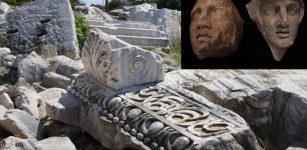 Once Impressive Temple Of Hadrian In City Of Cyzicus Will Be Restored Soon
Archaeology | Sep 7, 2020
Once Impressive Temple Of Hadrian In City Of Cyzicus Will Be Restored Soon
Archaeology | Sep 7, 2020

